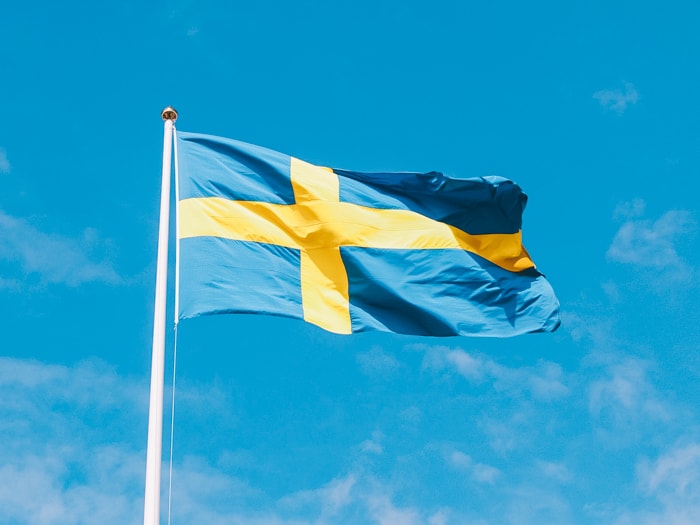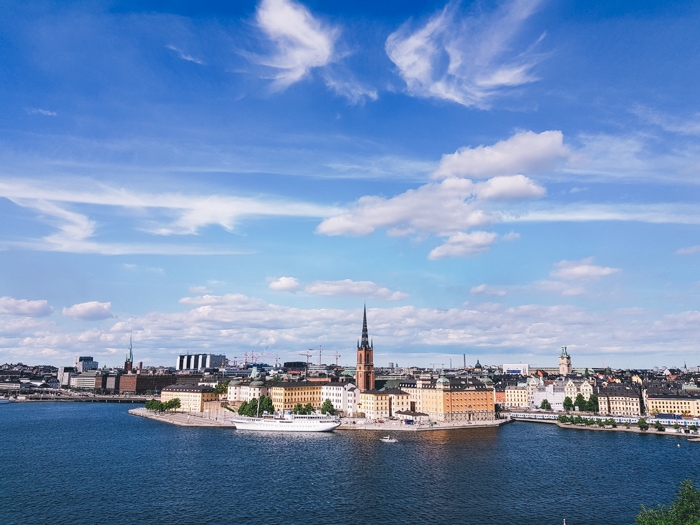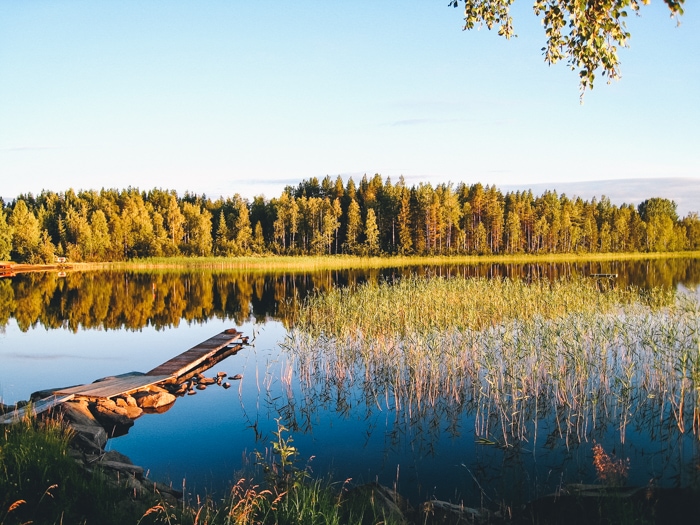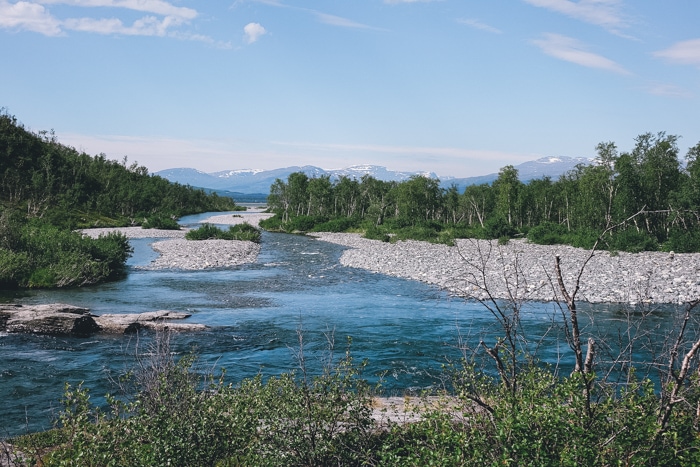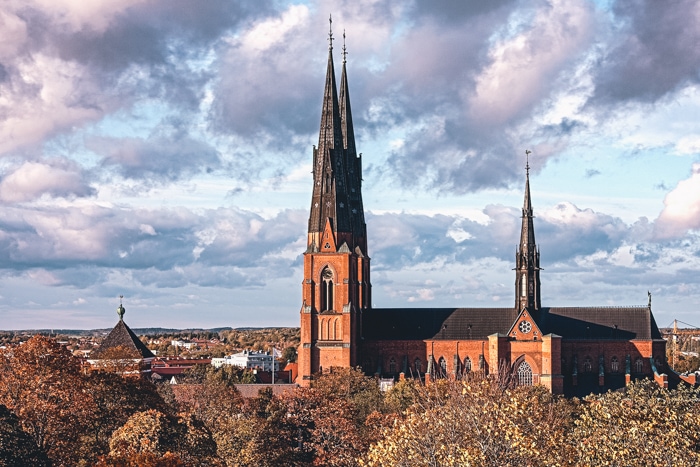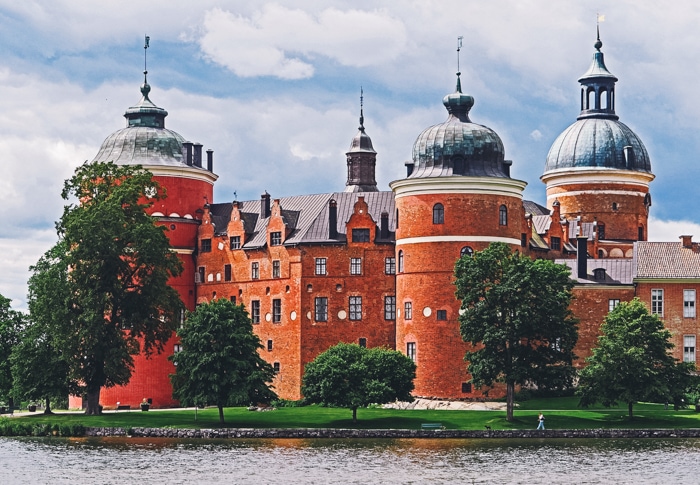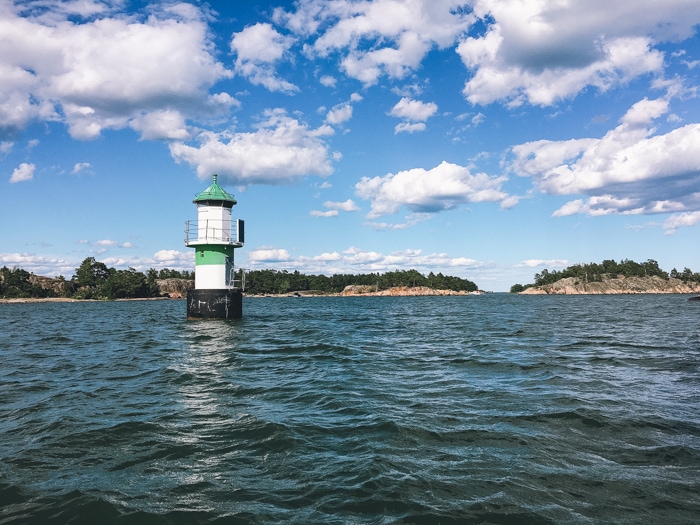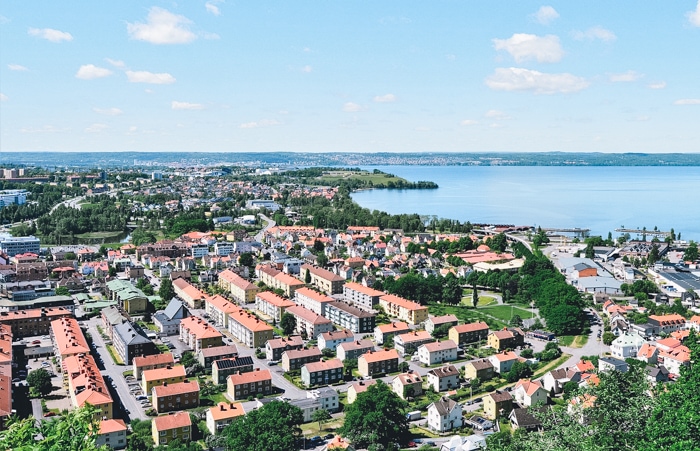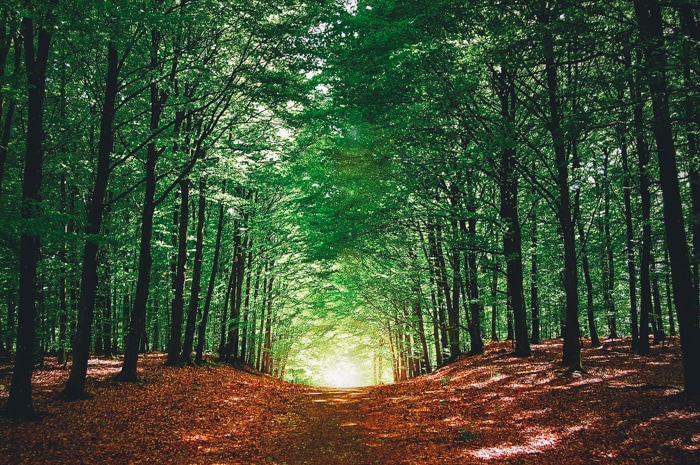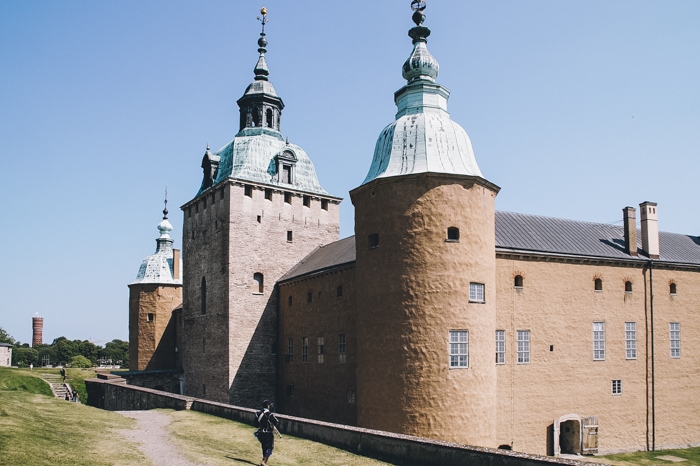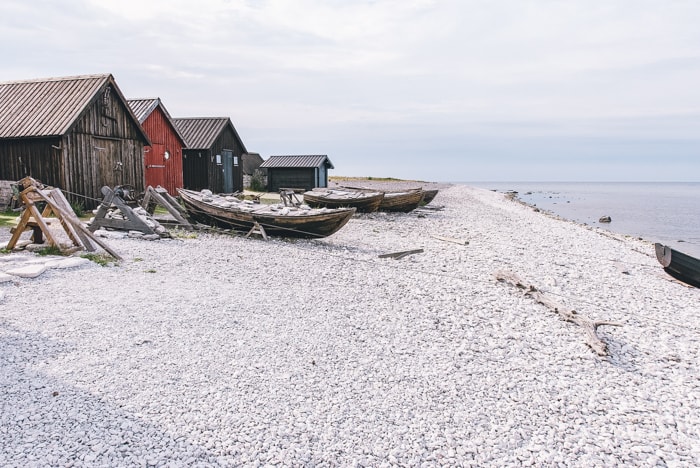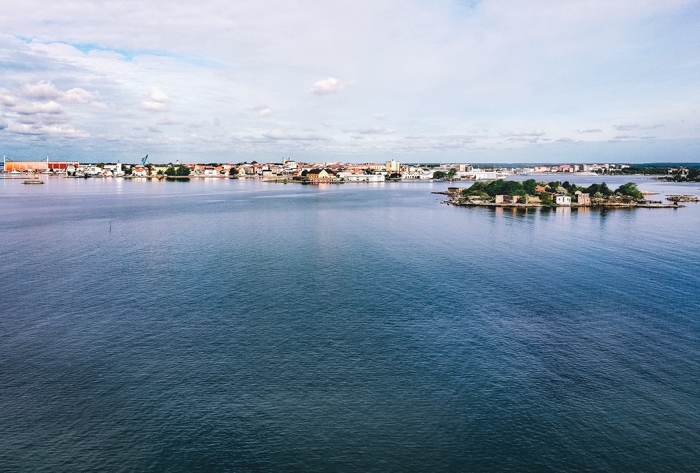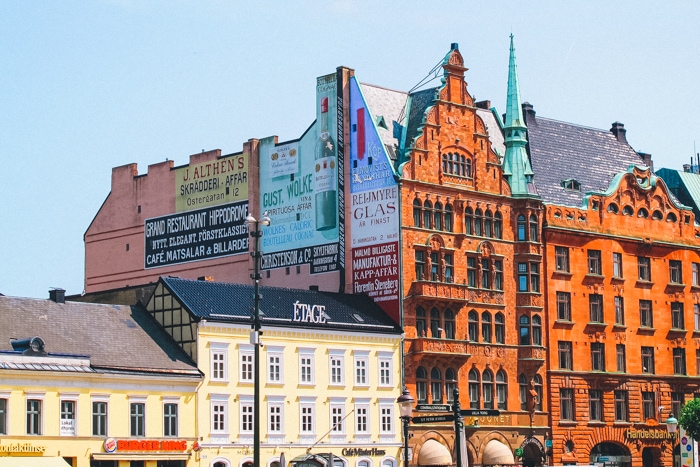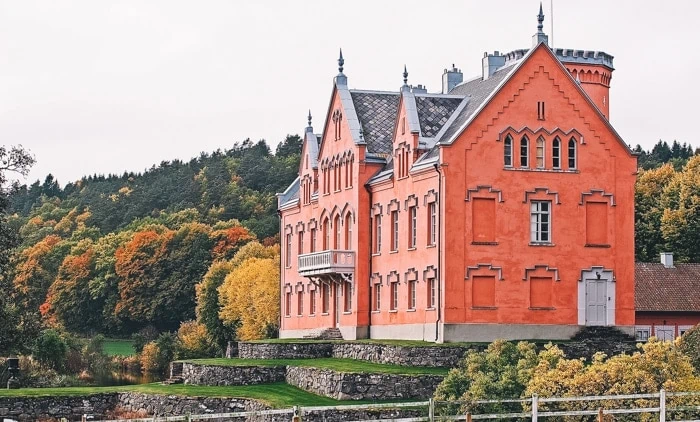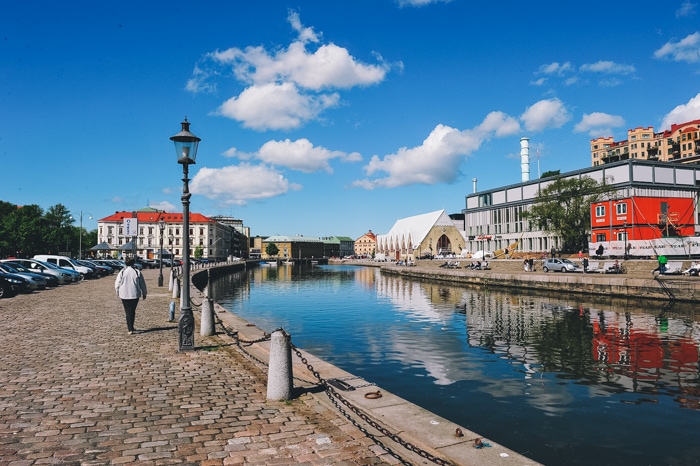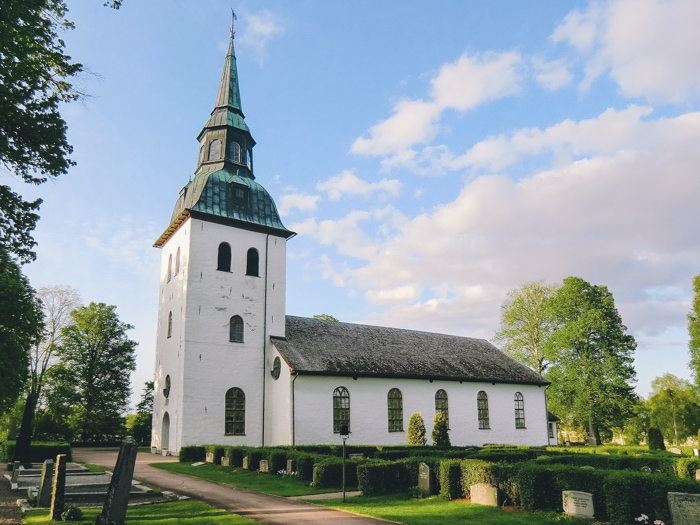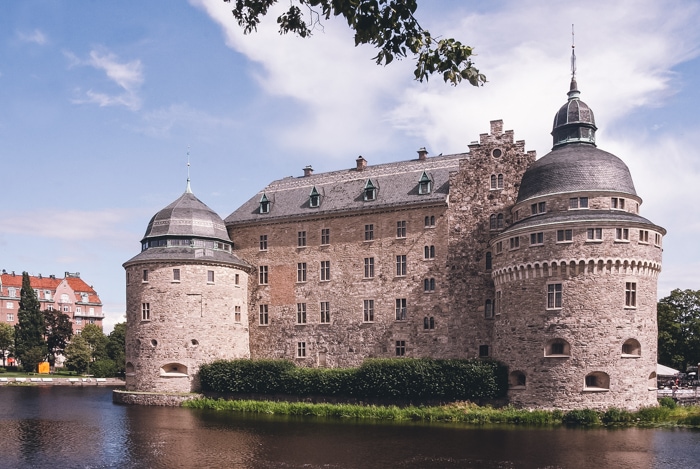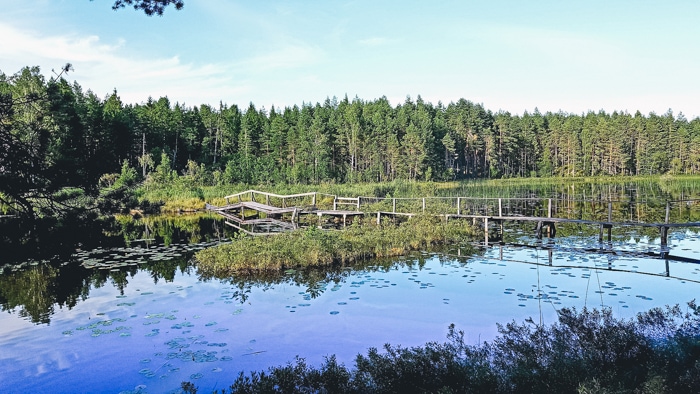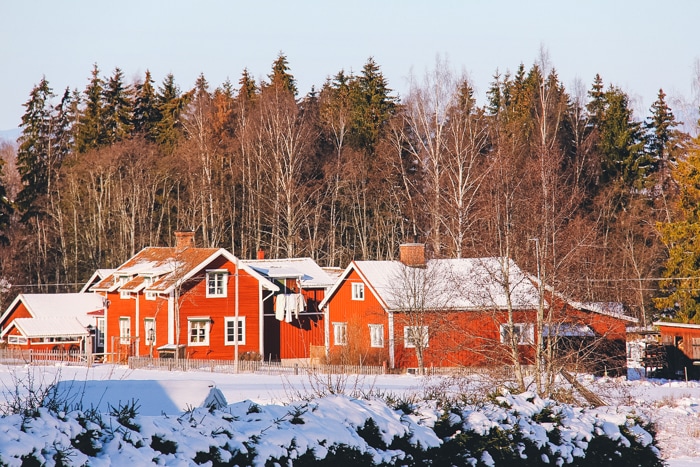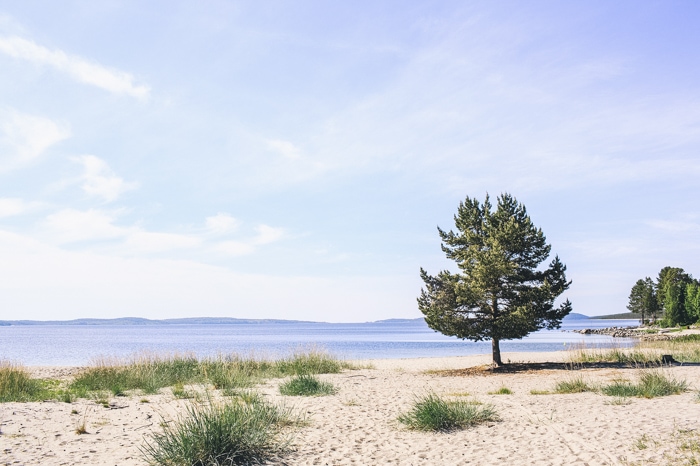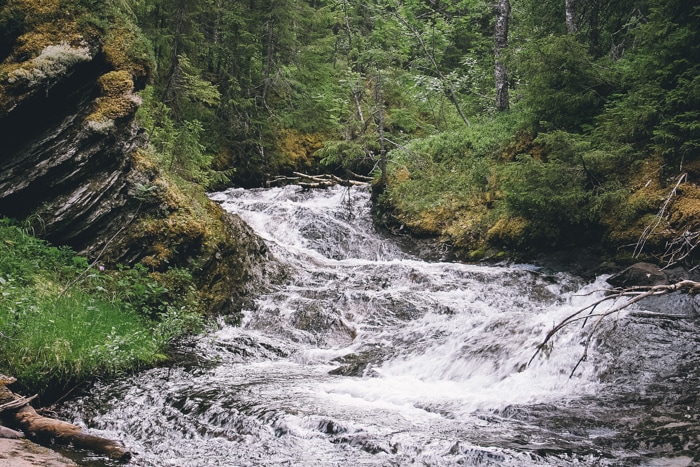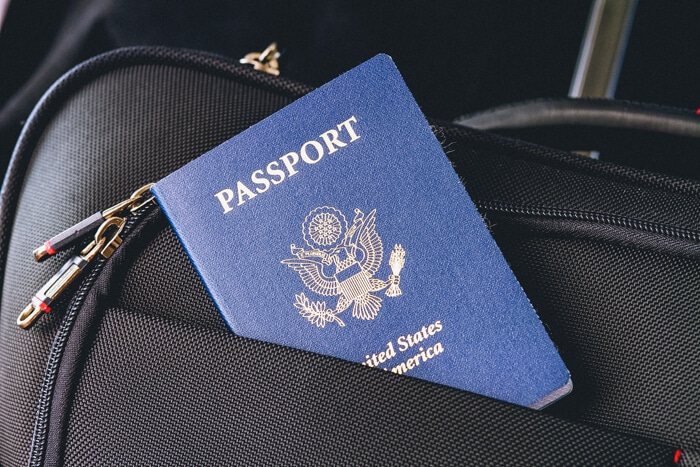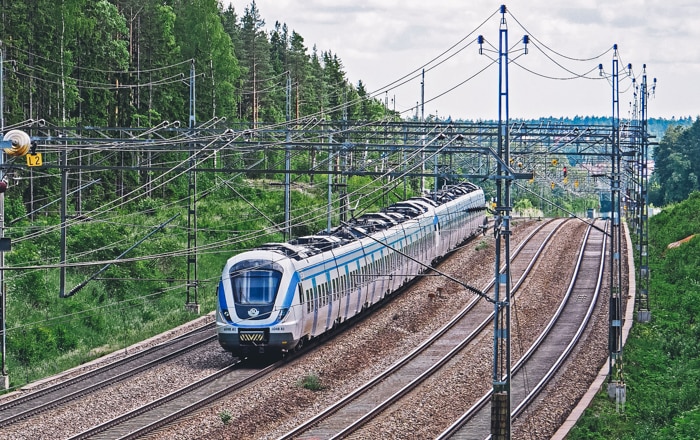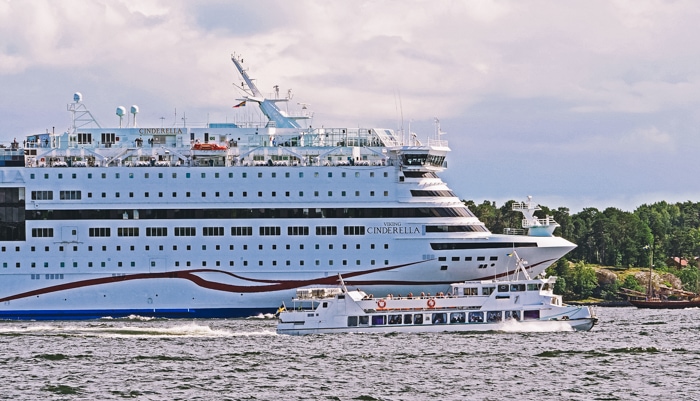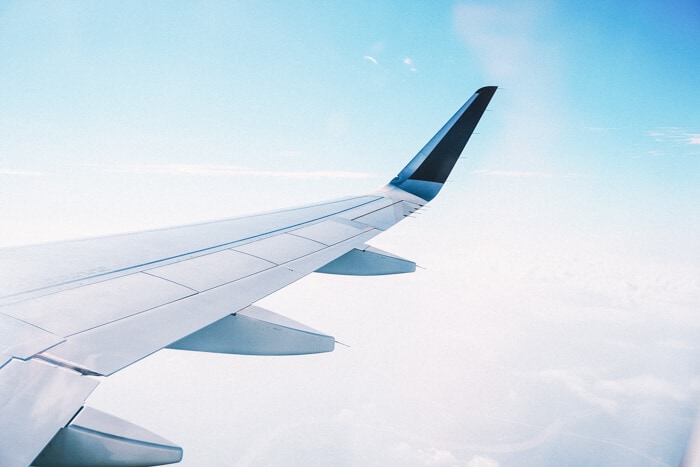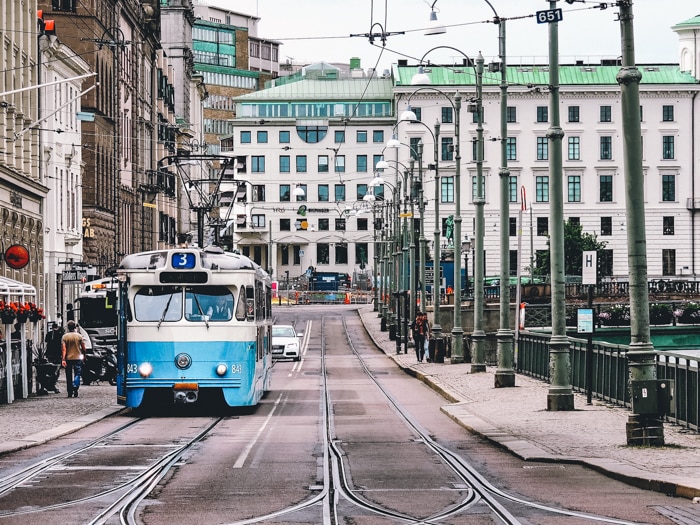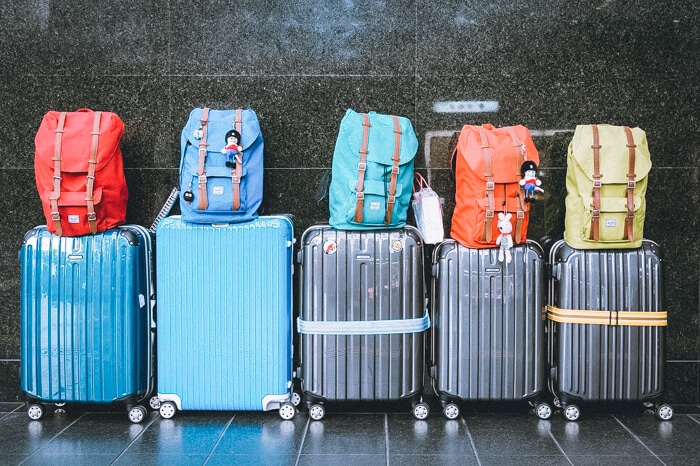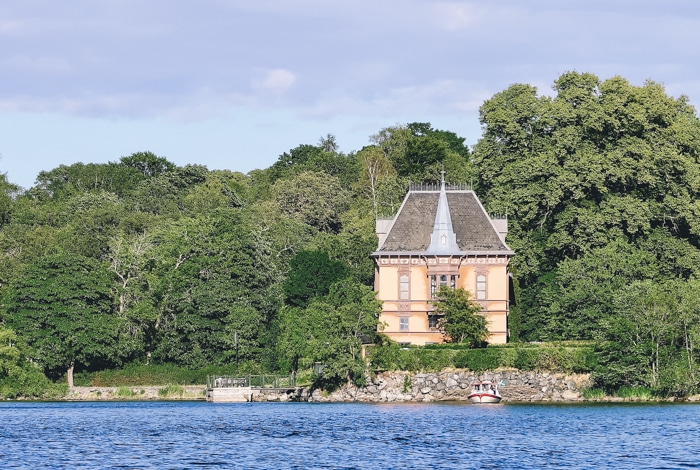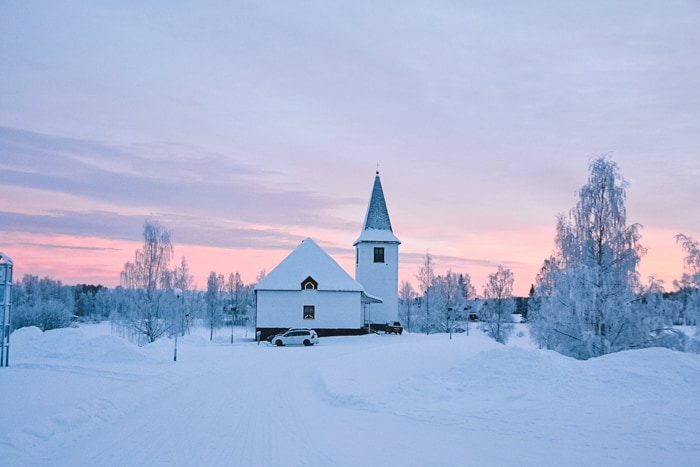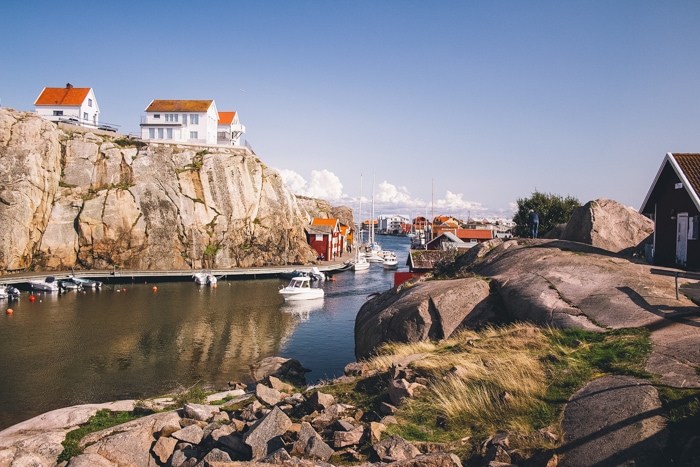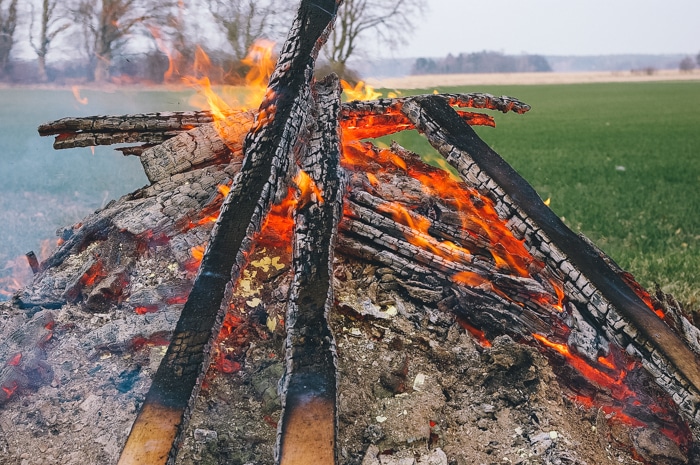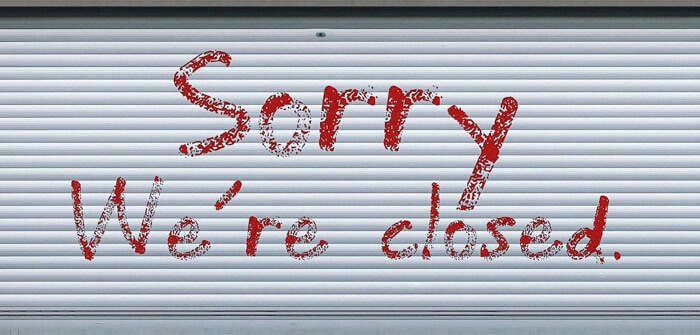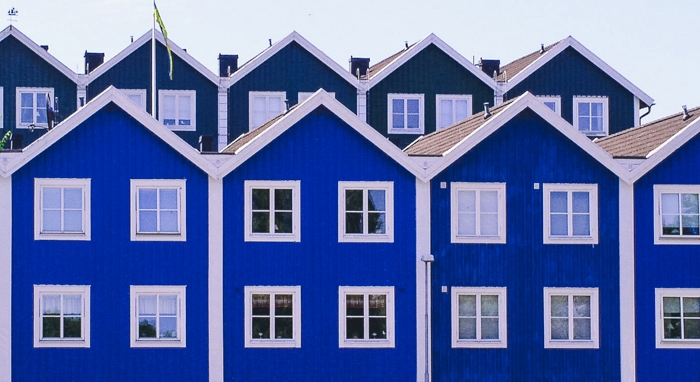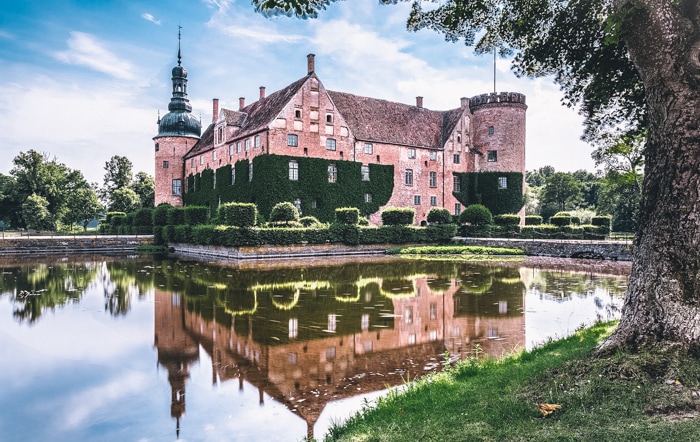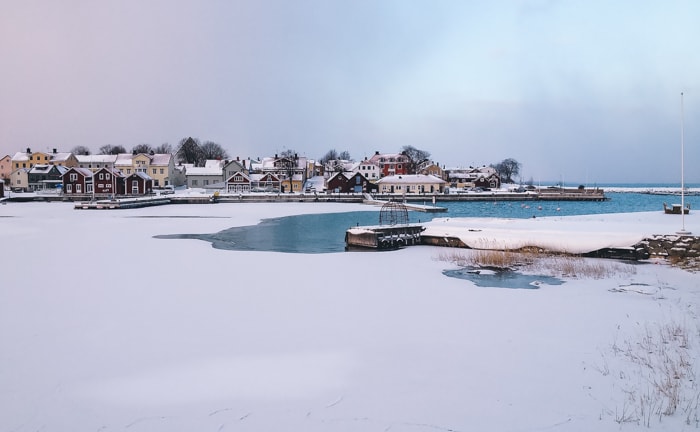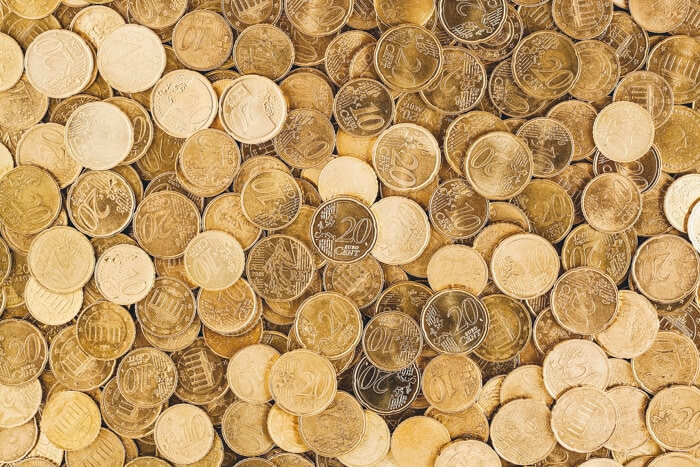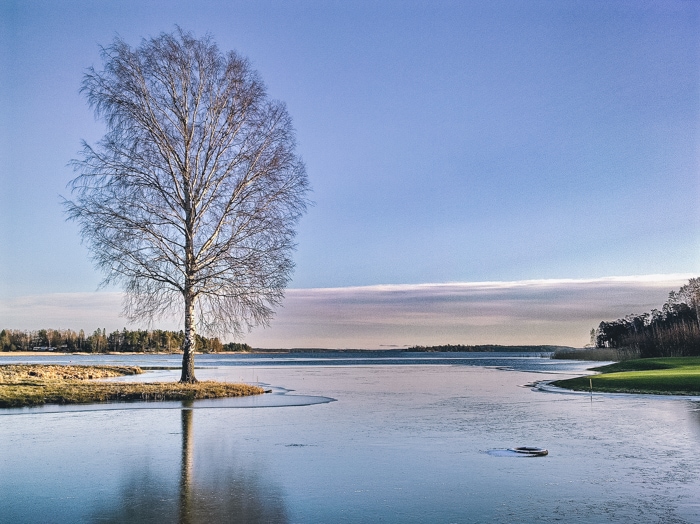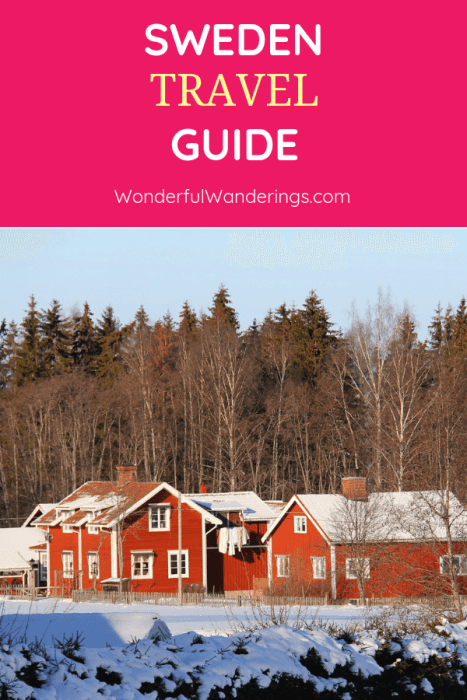Planning your Sweden holiday? Great! This guide will help you do just that.
Sweden is located in northern Europe, bordering Norway to the west and north and Finland to the east. Officially known as the Kingdom of Sweden, it’s connected to Denmark in the southwest by a bridge-tunnel across the Öresund.
The Scandinavian country has a rich history and varying landscapes from coastland islands to glaciated mountains. It’s a perfect destination for hiking and skiing as well as a hotspot of excellent cuisine.
The largest country in northern Europe, Sweden is part of the European Union. It’s also a member of the United Nations and World Trade Organisation and the Organisation for Economic Co-operation and Development (OECD).
Contents
- Sweden holidays: quick facts
- Sweden counties
- How to go to Sweden
- How to travel around Sweden
- What to pack for Sweden
- The best time to visit Sweden
- What to eat in Sweden
- Famous events in Sweden
- Public holidays in Sweden
- Cultural customs to be aware of in Sweden
- Where to stay in Sweden
- Basic phrases and their pronunciation
- Safety in Sweden
- The use of cash and cards in Sweden
- Calling abroad, WiFi and data use in Sweden
- Tipping in Sweden
- A brief history of Sweden
Sweden holidays: quick facts
Size: 450,295 km² or 175,896 sq mi
People living there: ~9,717,000
Capital: Stockholm
Governmental structure: parliamentary democracy within a constitutional monarchy
National day: June 6
Time zone: Central European Time / UTC+1 / GMT+1
Currency: Swedish Krona (SEK)
Power voltage and socket type(s): 230V, plug types C and F. If these don’t match with your devices, make sure to bring a universal adapter.
Official religion(s)/Freedom of religion: Over half of the Swedish population are members of the Lutheran Church of Sweden. Other religions include other Protestants, Eastern Orthodox Churches and Islam.
Official language(s) and general knowledge of English: Swedish is the official language. English is widely spoken as are Finnish and Yiddish.
Drives on this side: right
International driver’s licence accepted? yes
Phone code: +46
Vaccinations needed? none
Can you drink the tap water? yes
Sweden counties
Sweden has 21 different counties each with their own county administrative board, governor and separate county council.
1. Stockholm
More than one-fifth of the Swedish population resides in Stockholm County. Located on the eastern side with the Baltic Sea as a shoreline, Stockholm is the capital. The impressive coastal capital is spread across 14 islands and features charming medieval streets, parks and great restaurants. During the summer, explore the area on a bicycle and soak up the culture and architecture.
Check my itinerary on how to spend four days in Stockholm in summer.
2. Västerbotten
Located in northern Sweden, extending from the east to the west borders of the country. It borders Norway and the Gulf of Bothnia. Its capital is Umeå, the largest city in the county. You’ll also find Southern Lappland here, the traditional homeland for the Sami people. The ski resort, Hemavan, is located in Västerbotten County near the largest nature reserve in Sweden. Winter sports and outdoor activities are very popular here.
3. Norrbotten
The most northern county, it borders Norway to the northwest and Finland to the northeast. With mountains, coastline and an archipelago, the area of natural beauty also includes Northern Lappland. The region is home to Kebnekaise and Nikkaluokta, Sweden’s tallest mountain and Laponia national parks. A perfect destination for nature lovers, there’s plenty of outdoor activities to take part in such as dog sledding, hiking, skiing, and snowboarding.
4. Uppsala
Located above Stockholm County, Uppsala County also shares the Baltic Sea shoreline. The land is diverse with dense forest to the north and coastal shores to the east. The countryside mainly consists of farmlands and suburbs. The Lennakatten museum railway and Carl Linnaeus’ botanical garden can be found in Uppsala County.
5. Södermanland
The county can be found a little further south than Stockholm County. It’s the wealthiest county in Sweden due to a number of affluent cities in the region.
The capital is Nyköping, easily accessible by Skavtska Airport. The charming towns, palaces and waterfront scenes are just some of what draws visitors to Södermanland. There’s plenty to do and see here including the Gripsholm Castle, Parken Zoo and Tullgarn Palace.
6. Östergötland
Located in southeastern Sweden, the Baltic Sea follows its shoreline. The countryside is dotted with lakes and rich mineral deposits. Industries in Östergötland range from stone quarrying to textile weaving.
Its capital and neighboring twin city, Linköping and Norrköping, form one of Sweden’s metropolitan areas. Omberg mountain, in western Östergötland, offers beautiful views and fantastic hiking trails.
7. Jönköping
In the south of Sweden, Jönköping extends southward from Lake Vätter. The highest county in southern Sweden, its terrain is filled with lakes and wooded areas. The county capital and largest city is Jönköping, on the southern shore of Lake Vätter. With plenty of museums, natures reserves and parks to visit, there’s plenty to explore in the region.
8. Kronoberg
The county consists of a rolling landscape of woods and marshland. It features numerous lakes including the Åsnen and Möckeln. Situated in southern Sweden, its capital is the city of Växjö.
From churches and cathedrals to museums and nature reserves, the area has a lot to offer. You can also find the IKEA Museum in Älmhult.
9. Kalmar
In the southeastern region of Sweden, the Kalmar County has two parts: the mainland and the island of Öland. With wooded and marsh areas as well as a coastal region, the landscape varies.
Soak up the history and culture with a visit to the Kalmar Castle, Borgholm Castle, and Solliden Palace. As well as historical sites, there’s a number of nature and wildlife parks to spend your time in.
10. Gotland
Located on the Baltic Sea, Gotland is Sweden’s largest island. The county is the only county in Sweden that is not governed by a county council. Gotland is a popular holiday destination with plenty of opportunities for cycling, hiking, history, culture, and events.
You can travel to Gotland by air or ferry. The ferry takes you directly to the capital of the county, Visby.
11. Blekinge
The smallest county, covering less than 1% of Sweden. Its located in the south of Sweden, bordering the Baltic Sea. Discover Sweden’s southern wilderness and unique archipelago. It may be small but has excellent cycling, hiking trails, and fishing.
While visiting Blekinge County, be sure to explore the UNESCO World Heritage Centre, the late 17th-century Naval City of Karlskrona.
12. Skåne
Sweden’s southernmost county covers around 3% of Sweden’s total area however 13% of Sweden’s population resides here. Situated on the peninsular southern tip, it’s surrounded by water on three sides. The county capital, Malmö, is the third-largest city in Sweden. The Öresund Bridge connects Sweden to Denmark and is the longest combined road and rail bridge in Europe. Get lost in nature, visit castles and strongholds or indulge is some of Sweden’s top restaurants and culinary offerings.
13. Halland
Located along the western coast of Sweden, its coast follows the Kattegat Sea. Its coastline is smooth and rivers rich with salmon.
The Vallåsen ski resort can be found in Yllevad. Visit Varberg Fortress, an impressive medieval prison overlooking the sea. The county capital city is Halmstad, where you can find 17th-century Halmstad Castle.
14. Västra Götaland
The second largest county according to population, its capital is Gothenburg. Gothenburg is one of Sweden’s major ports and second-largest city. A visit to the Liseberg amusement park in Gothenburg is the perfect way to spend an adrenaline-filled day. Explore charming cobbled streets and take in the rich history and culture.
15. Värmland
Located in west central Sweden, the county borders Norway to the west. The region has over 10,000 lakes dotted throughout the forested landscape. Sweden’s longest river, the Klarälven river, splits the area in half.
From timber-rafting down the river to a visit to the Glaskogen nature reserve, there are plenty of outdoor activities to keep you busy. The county contains Lake Vänern, one of Europe’s largest lakes.
16. Örebro
In central Sweden, the county capital is Örebro. The region has a number of lakes, forests, and parks for hiking and outdoor activities. You can find the largest water park in northern Europe in Örebro. The Gustavsvik was built in 1963 and attracts hundreds of thousands of guests every year.
17. Västmanland
Situated in central Sweden, the county has shoreline stretching towards the Mälaren, Sweden’s third-largest lake. From cultural attractions to historical sites, there’s a number of uniques places to visit. Head to the Leos Lekland amusement park in Hällagatan, perfect for keeping children entertained.
For history buffs, visit the Arboga Museum, the merchant house built in 1846 hosts a photographic library and collection of silver, tin and alder root.
18. Dalarna
In the middle of Sweden, the county borders Norway. Experience the mountains, Sami culture, lakes and craft traditions in Dalarna. Exciting activities include skiing, snowmobiling, snowshoeing, ice skating, dog sledding and more. Dalarna is the perfect destination for winter sports and its exquisite natural beauty attracts visitors annually.
19. Gävleborg
Located on the Baltic Sea coast of Sweden, the capital is Gävle. With low and level landscape along the coast, you’ll see the inland rise toward a wooded highland. The Voxnan, Jädraån, Gävleån, and Dalälven rivers are used to produce hydroelectric power.
The Järvsö ski resort is one of the most southernmost skiing destinations with 20 slopes. Other places to visit include the Hamra National Park and AB Furuviksparken amusement park.
20. Västernorrland
In the north of Sweden, the region is heavily covered by forests. Sundsvall is the largest city and the capital of the county. Visit historical sites, nature reserves, and parks.
Hike the Skuletberget, a mountain near the E4 in Docksta. The mountain is 294 meters above sea level, and the highest coastline is 286 meters above sea level. Get some fresh air and take in the views.
21. Jämtland
In central Sweden, the region is known for its winter sports and hiking, with some of the busiest ski resorts in Sweden. Östersund is the county capital with Åre being one of Sweden’s most popular ski resorts. Containing only 1.5% of the national population, the region is one of the least populated in Europe. The Åre Östersund Airport makes the area easily accessible from Stockholm.
How to go to Sweden
Entry requirements
If you’re traveling from one border-free Schengen country to another, then EU nationals are not required to show a passport. A passport is required for UK citizens and EU nationals outside of the Schengen agreement area. Australians, Canadian and US nationals can stay in Sweden for up to 90 days without a visa. As with most countries make sure you have at least two free pages in your passport and six months left.
Transportation to Sweden
By bus
If you’re coming from a neighboring country then you can reach Sweden by bus from Norway and Denmark. This is also the cheapest travel option when coming from these countries. There are budget long distance bus companies that offer this route such as Flixbus. There is no direct bus route to Sweden from Finland.
Check here for Flixbus routes and prices.
By train
The best way to reach Sweden from Norway is via train, this takes approximately six hours. The train from Denmark to Sweden takes a little less time and is the most efficient way to travel. The easiest way to reach Sweden from Finland is by air.
Check here for train routes and prices from within Europe.
By ferry
When coming from Finland, you have the option of getting the train to Turku Satama then getting a ferry to Stockholm. However, this isn’t the cheapest way to travel. You can also reach Sweden via ferry from a number of places including Aland, Poland, Germany, Estonia, Norway, and Latvia.
Click here for ferry routes and prices.
Fly to Sweden
Sweden’s largest airport, Stockholm Alanda Airport, is likely where you will be flying into. It serves more than 20 million travelers every year. The Göteborg Landvetter Airport is the second-largest airport and serves the city of Gothenburg. The Bromma Airport to the west of the city center mainly serves domestic flights but also some international flights to Sweden.
Check here for the best flight options and prices.
How to travel around Sweden
Independent travel around Sweden
Whether you’re heading to the capital city or plan on seeing the countryside, it’s easy to travel throughout Sweden. Explore by air, rail, bus, car or boat. Sweden’s extensive rail network will take you from one end of the country to the other. From the milder south to the cold Arctic Circle. If you plan on visiting one of Sweden’s island and archipelagos, then the coast ferries are the best option.
Sweden has a number of domestic airports that offer quick and comfortable journeys all around the country. If you prefer to rent a car, the traffic is generally light and the road conditions are fantastic. Remember that snow tires are compulsory from December to March.
Check here for a good overview of rental car providers and their prices.
For travelers looking for a budget option, Flixbus again provides a good solution as it has taken over Swebus, the country’s biggest express bus travel provider with around 150 destinations.
What to pack for Sweden
The difference between winter and summer temperatures in Sweden can be extreme but, in general, the climate is temperate. This is mainly due to the Gulf Stream. Sweden has four distinct seasons: spring, summer, fall, and winter. During winter, in the Arctic Circle, temperatures can go below -30°C.
July temperatures see an average of 13 to 17°C, with February usually being the coldest month. From December to April, snow covers the ground in southern Sweden. In northern Sweden, the first snowfall is often already in October with most of the country icebound in winter.
What to pack for summer in Sweden
- light clothing
- good walking sandals
- a reusable water bottle
- hiking pants
- sunglasses
- suncream
- a swimsuit
What to pack for winter in Sweden
- comfortable waterproof shoes
- merino woolen socks
- a merino woolen base shirt
- merino woolen leggings
- a warm, water and windproof jacket
- snow boots
- a reusable water bottle
- a hat
- a scarf
- gloves
What to pack for Finland in fall and spring
Both fall and spring can be cold in Finland, with fall usually being a better time to visit Sweden than spring. Either way, you’ll probably still need to bring winter wear and layer up so you can adjust to the changing weather. A decent coat is a must.
The best time to visit Sweden
Generally, the best time to go to Sweden is from May to September, for both the north and south. The summer weather sees longer hours of sunshine and less rain.
Of course, the time you travel depends on what you plan on doing during your visit. If you want snow then aim to travel between late November and March. To see the midnight sun, visit Sweden at the height of summer during June and July. The best time to see the northern lights is in the winter, from late September to April.
What to eat in Sweden
- Kanelbulle, cinnamon bun
- Toast Skagen, peeled prawns with mayonnaise, dill, and lemon topped with fish roe on a crisp sautéed bread
- Prinsesstårta, dome, layered sponge cake covered in bright marzipan
- Köttbullar, Swedish meatballs
- Surströmming, pickled Herring
- Svenska fisksoppa, Swedish fish soup
- Västerbottensost, a Swedish cheese, Västerbotten
- Räksmörgås, open-faced shrimp sandwich topped with lemon, egg, and mayonnaise
- Knäckebröd, crisp bread
- Gubbröra, egg-anchovy salad
Famous events in Sweden
- Valborg (April 30) – the Valborg festival is celebrated throughout Sweden and celebrates St Walpurgis and the coming of All Hallows Eve six months before Halloween. South and central Sweden sees massive bonfires and feasts.
- Malmo Festival, Malmo (August) – known locally as Malmofestivalen, the festival is held over eight days with performances and feasts throughout the region.
- Stockholm International Film Festival, Stockholm (November) – Dozens of films from all over the world are screened at venues throughout Stockholm.
- Snöfestivalen, Kiruna (January) – this festival is focused entirely on snow sculpting. The tradition began in 1985 and now draws in artists from all over to create beautiful sculptures.
- Medeltidsveckan, Visby (August) – the week-long medieval festival includes axe throwing, archery, feasts, and live music.
- Baltic Festival, Karlshamn (July) – one of Sweden’s biggest free festivals. Huge crowds enjoy live bands, events, and a carnival parade.
- Pajala Fair, Pajala (July) – the event is attended by over 40,000 people every year. You’ll find handmade Sami knives, smoked fish and much more.
- Vasaloppet, Mora (March) – the 90 km cross-country ski event finishes in Mora. Around 15,000 people take part each year.
- Classic Car Week, Rättvik (July/August) – a very popular event with motorheads. People from around the world come to show off their beautifully restored classic cars.
- Kulturnatt, Gothenburg (September/October) – you’ll find open studios and art installations, as well as live performances and activities for both children and adults.
Public holidays in Sweden
- New Years Day
- Epiphany
- Good Friday
- Easter Sunday
- Easter Monday
- Labour Day
- Ascension Day
- National Day (June 06)
- Pentecost Sunday
- Midsummer Eve
- Midsummer Day
- All Saints Day
- Christmas Day
- Second Day of Christmas
- New Year’s Eve
Cultural customs to be aware of in Sweden
Sweden is a great country to visit and the Swedes are friendly, soft-spoken and humble people. They find boasting unacceptable, dislike arguing and see self-important behavior as aggressive. Form an orderly queue and be polite as you would in any other country.
Where to stay in Sweden
When I need to book a hotel or a guesthouse, I always use Booking.com. That site has a bunch of filtering options so I can easily drill down to just the hotels that meet my criteria – like having free WiFi and being well-located. If you’re looking for accommodation for your trip to Sweden, I highly recommend you check there.
When I want to book an apartment rather than a hotel, I use Airbnb.
Basic phrases and their pronunciation
Good morning
Please
Thank you
I’m sorry
Excuse me
You’re welcome
I don’t understand
Do you speak English?
Yes
No
How much is this?
Where is…?
May I please have…?
/
The bill, please
I don’t eat…
I’m a vegetarian
Train station
Airport
I don’t feel well
God morgen (good mor-gohn)
Snälla (snel-lah)
Tack (Tack)
Jag är ledsen (yah er les-son)
Ursäkta mig (oo-shet-tah may)
Varsegod (va-sha-good)
Jag förstår inte (yah for-shtor in-teh)
Pratar du Engelska (prahtah du engelskah)
Ja (Jah)
Nej (Nay)
Vad kostar den? (Vahd costahr den)
Var ligger…? (vart lee-gar)
Skulle jag kunna få…? (skool-leh yah koo-ooo-nah for)
Notan tack (noo-ten take)
Jag äter inte (ye ah-teh in-teh)
ag är vegetarian (ye er ve-geh-ta-ree-on)
Tåg station (toh stah-horn)
Flygplats (fleeg-plahts)
Jag mår inte så bra (yah mar in-teh sa bra)
Safety in Sweden
In general, Sweden is a very safe place to travel with a low crime rate. It’s one of the safest countries in the world for both residents and tourists, ranked number 14 on the Global Peace Index. While traveling, use basic common sense and take precautions to avoid petty criminals and scams, as you would in your own country. Whether you plan on visiting the capital or heading out into the countryside, Sweden feels very safe to travel.
The use of cash and cards in Sweden
Cards are widely accepted in Sweden and you’ll be able to pay by card for the majority of your trip. Cash is used in Sweden but they are heading towards becoming a cashless society. Many places are calling themselves cash free with Sweden buses being completely cash free. American Express, Visa and MasterCard are very much recognized throughout Sweden.
Calling abroad, WiFi and data use in Sweden
Those with a SIM card from an EU country don’t have to pay roaming charges when calling, texting, or using data in Sweden. The same goes for some global phone plans.
If you don’t have a EU SIM but still want to have unlimited WiFi, check out Solis Wifi.
Skyroam offers both day passes and monthly subscriptions providing you with 4G on your trips. I’ve been using their daily passes not just when I travel outside the EU (no roaming charges for me in the EU) but also as a backup for when I think I’ll go over my phone’s data plan.
Check out Solis Wifi here.
Tipping in Sweden
So do you tip in Sweden? Well, tipping isn’t common in Sweden and while it’s okay to round up the bill, staff will probably look at you strangely if you’re trying to give them a big tip. You can read more about tipping in Sweden here.
A brief history of Sweden
Fourteen thousand years ago, Sweden was still covered by thick ice cap. During the early Iron Age, the population of Sweden became settled with agriculture forming the basis of the economy. The Viking Age, between 800-1050 AD saw many Viking expeditions set off from Sweden to both plunder and trade along the Baltic coast.
Trade continued to grow during the 14th century. The Black Death reached Sweden in 1350, leading to a long period of population and economic decline. In 1397, the Kalmar Union was formed seeing Denmark, Norway, and Sweden all under Danish rule. Sweden then went on to defeat Denmark in two wars before the Kalmar Union ended in 1523.
Sweden was a great power in northern Europe with Finland, provinces of Germany and present-day Baltic republics also belonging to Sweden. After Sweden’s defeat in the Great Northern War (1700-1721), the country lost most of its provinces on the other side of the Baltic Sea. Overseas trade took a hit during the early 19th century due to the Napoleonic Wars. Industry then developed rapidly between 1900-1930, transforming Sweden into one of Europe’s leading industrial nations after World War II.
The Nordic country joined the United Nations in 1946, followed by the European Union in 1995. In 2000, saw the construction of the Öresund Bridge, linking Sweden and Denmark. Sweden is world-best in business, innovation and is – at the time of writing – the best-positioned country in the world to meet the UN’s Sustainable Development Goals. It’s also considered one of the best countries to live in, ranked 6th in the world.
PIN FOR LATER
This guide contains affiliate links. If you book or buy something through them, I earn a small commission at no extra cost to you.
Find below our top travel guides about Sweden.

